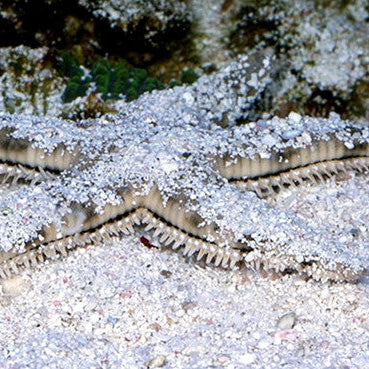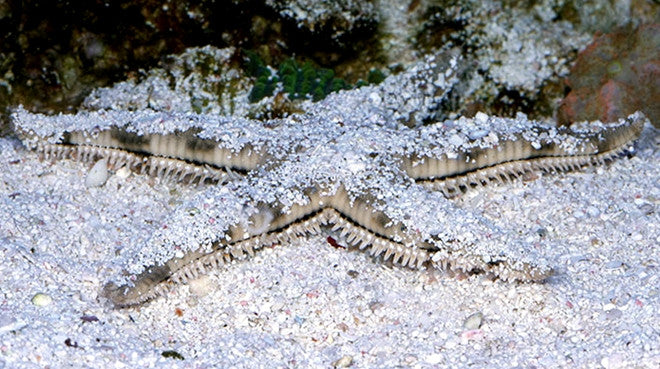Year End Clearance Sale 50% Off All Corals
Free Shipping Over $249 or $29.99 for Orders over $100
Sand Sifting Starfish
$ 24.99 $ 29.99
Please select all options.
How to Care for Sand Sifting Starfish
written by Dave Burr
An important team member of any "Clean Up Crew" the Sand Sifting Starfish will sift through the sand bed eating detritus and leftover scraps of food. Chances are you will not see this starfish often, as it will burrow into the sand to hide or search for food. Nevertheless it is a good choice for any reef aquarium, and will help create a balanced ecosystem and keep your sand looking good.
Feeding: Provide the Sand Sifting Starfish with bits of meaty foods such as mysis shrimp, or chopped shrimp, or silversides. It will also scavenge the aquarium for bits of food missed by the fish.
Acclimation: Maintaining proper pH, Ca, Alk, & Mg levels is important for starfish. Take the time to do a drip acclimation with any starfish as they do not tolerate rapid changes in water chemistry very well.
Care Level: Easy
Reef Compatible: Yes
Diet: Omnivore
Range: Solomon Islands, Fiji
Family: Astropectinidae
Water Conditions: 75-80° F; sg 1.024-1.026 (1.025 is ideal); pH 8.1-8.4 Ca 420-440 ppm, Alk 8-9.5 dKH, Mg 1260-1350, Nitrates <10ppm, Phosphates < .10ppm
Water Chemistry: It is important that proper calcium (420-440 ppm), alkalinity (8-9.5 dkh - run it 7-8 if you are carbon dosing) , and magnesium levels (1260-1350 ppm) are maintained. Raising magnesium levels gradually up to 1400-1600 ppm can help to combat algae outbreaks, just keep CA and Alk in line as you raise the Mg. Nitrates should be below 10 ppm and phosphates should be below .10 ppm. We recommend doing a water change when Nitrate levels rise to 10 ppm. It is important to replace your phosphate media when phosphates rise to .10 ppm. Media Reactors make the most efficient use of your phosphate media by fluidizing it.
Dosing: Vivid Aquariums uses and recommends dosing pumps to automate the dosing of additives and keep your levels more constant. A dosing pump can alleviate the chore of manually dosing your aquarium with Ca, Alk, & Mg 2,3, or 4 times per week and will benefit your aquarium by keeping your levels constant through frequent small additions of Ca, Alk, & Mg. Our tanks all progressed when we switched from 3 manual dosings per week to 70 automatic dosings per week and we got a lot more work done.
Category: 10-25, astropecten-polycanthus, Clean Up Crew, easy, omnivore, Starfish
Type: Invert



